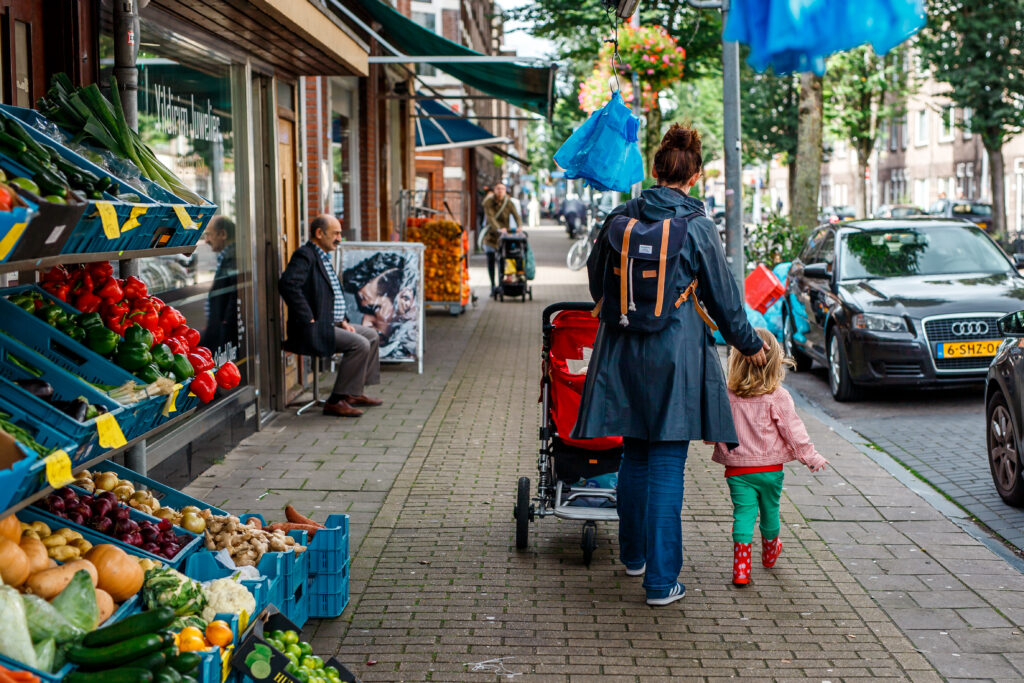
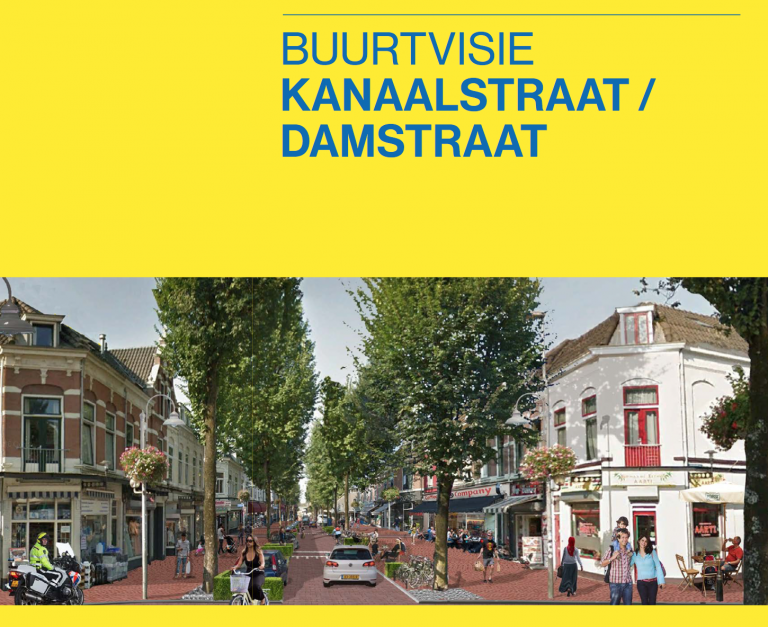
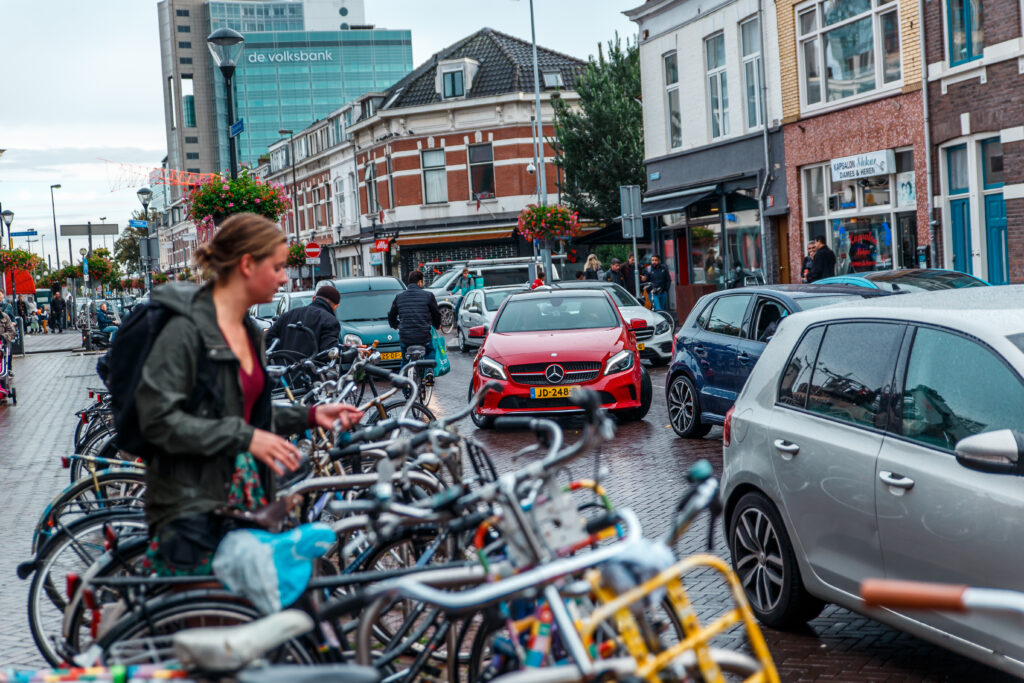
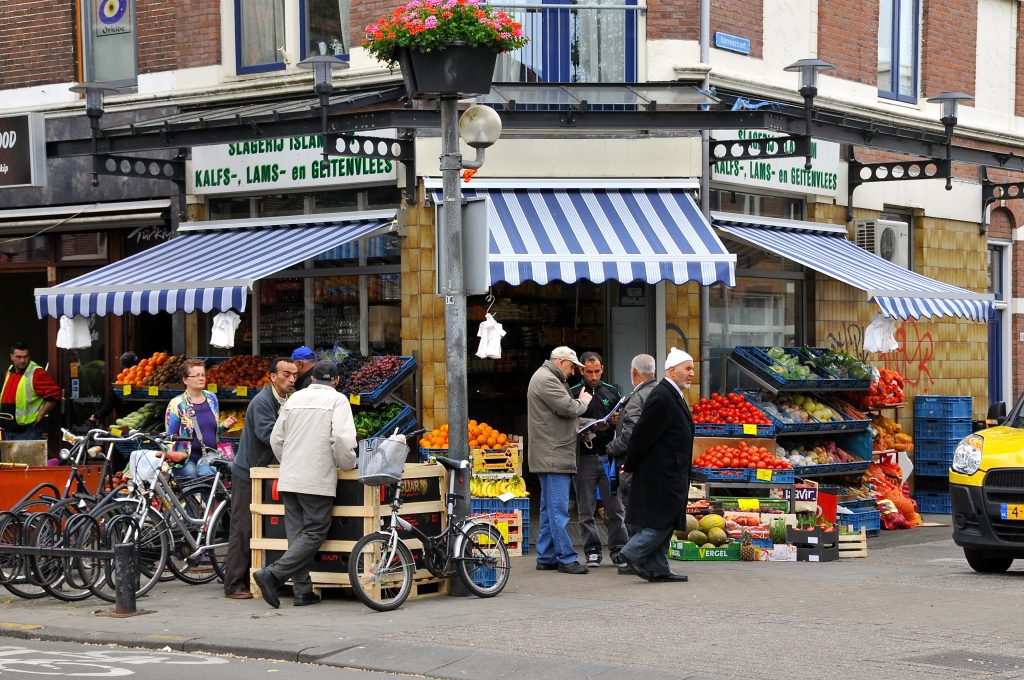
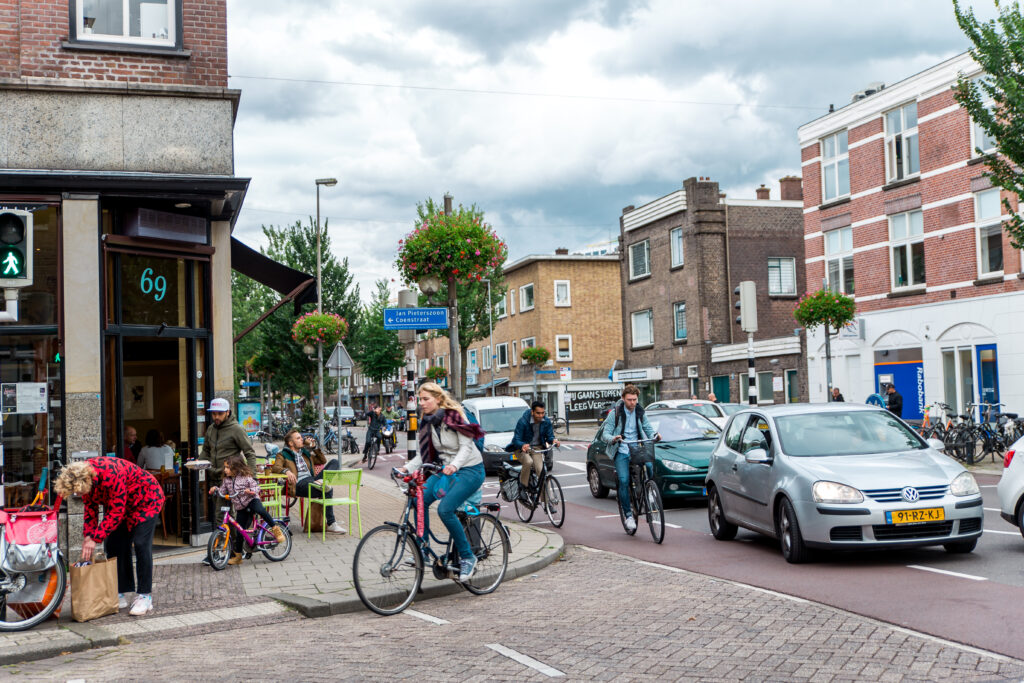 Kanaalstraat
Kanaalstraat
Utrecht_Sustainable future
Getting off your bike for a little chat. Cross the street to get a doner. Quickly park the car to do the weekly shopping at the grocer and Iranian specialist. Go for a walk with the pram. Walk home from the station in a few minutes. Have a bite to eat with a few friends at Surinamese restaurant down the street.
Sociability. Crowds. Urban dynamics. And peace, daily life, going to school, playing in the street and sitting in the garden. But also the experience of a messy and unsafe Kanaalstraat and Damstraat, by speeding cars, youngsters hanging, laughing gas users and a long history of incoming and outgoing residents. Plus the huge developments in the immediate vicinity of the station and the Jaarbeurs, affecting areas such as traffic and health.
Dialogue
Local businesses and residents have a huge drive to turn their area in a beautiful and special place. They are supported by 12N Urban Matters, and Frans Werter and Suzy Koot of Buro de Steeg. Together with stakeholders, a sustainable future for the charming little district is discussed. Sometimes, there is a conflict of interest between business owners and residents, and they try to find a solution together. Sometimes very constructively and collectively, and sometimes stubborn and opposed. But always in dialogue . A very complex task, where traffic, economy, health, sustainability, organization, planning, housing and community development interlock. And a great challenge for 12N Urban Matters.
The vision
The Kanaalstraat and Damstraat will continue to be lively shopping streets in a residential area, known far outside of Utrecht. Many people visit the Kanaalstraat: people from Utrecht West, the rest of the city and even further beyond. You can come here by bus, bicycle, on foot or by car. Everyone feels at home, safe and pleasant in the Kanaalstraat and Damstraat. It is neat and clean here, with a Mediterranean “look and feel”. This is truly a multicultural society, in the very heart of the city. The different groups of Dutch people mix and meet, but also keep their own customs and habits, and all of that without hassle, trouble or irritation. Despite everything being busy and close together, despite so many inhabitants on a square kilometer. Not the most decent neighborhood in the city, but also one far from rough and unsafe.
Today, the Kanaalstraat and Damstraat are versatile streets, as well as they will be in the future. Currently, the residents and shopkeepers experience regular nuisance from youth or petty crime. Or from the traffic that is chaotic and dangerous. Pedestrians, cyclists and cars regularly get in each other’s way. We want to solve that.
That is why our main vision includes:
- safe and quiet way of living and growing up in a beautiful, clean and sustainable environment
- shops and catering: for the neighborhood, the city and the rest of the Netherlands
- maintaining the current multicultural character; more diversity of products completes the street
- space for all residents and entrepreneurs (no crowding)
- higher quality of appearance, spacious for more greenery, meeting and residing
- accessibility and safety for car, bicycle, pedestrian and public transport, as well as more space for pedestrians
- Damstraat as an entrance to Lombok without any shortcuts
Offered and accepted
Each of the above points corresponds to concrete measures in the vision. And, it includes: a redesign of the public space, added space for pedestrians, one-way traffic for cars on the Kanaalstraat and monitoring of the parking situation in the residential streets.The vision was presented by the neighborhood in December 2017 and offered to the councilor. The city council subsequently passed a motion encouraging the councilor to find money necessary for implementation as soon as possible.
Click here for the vision
Click here for the blog
Click here for the infographics about the process until mid-April
Commissioned by: municipality of Utrecht
Serving: entrepreneurs and residents of Lombok
In collaboration with: Frans Werter (Buro de Steeg) & Suzy Koot (Bureau Lokahi)
Period: October 2016 – December 2017

